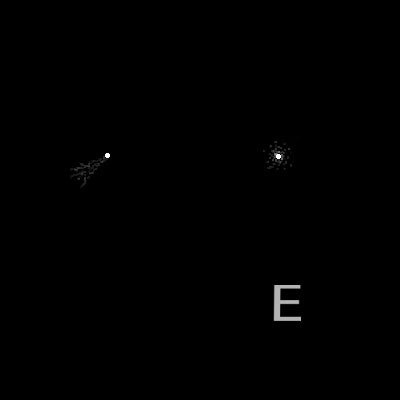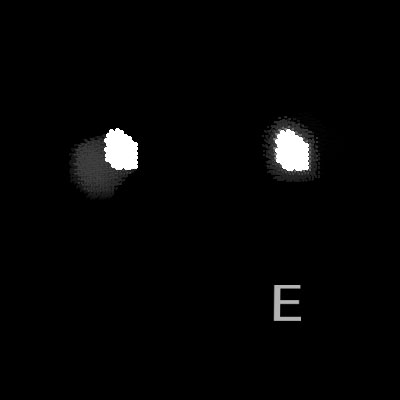This week's column by Ctein
For most photographers, lens designs are simply magic, and that's the way they should be. Knowing what goes into a lens design and what trade-offs have been made honestly won't do a single thing to improve your photographs. A side effect of this, though, is that some photographers become puzzled, even disturbed, by some of the choices lens designers make. Why isn't some new lens a stop faster, or smaller, or why did they "cheapen" the product by correcting some flaws in software instead of in glass?
A camera lens is a barrel of compromises. To appreciate this, think about the simplest lens—a cheap magnifying glass. It exhibits geometric distortion, spherical aberration, flare, astigmatism, coma, and lateral and longitudinal chromatic aberration up the wazoo. It's so bad that Newton was driven to reinvent the reflecting telescope, because he was convinced that lenses presented unsolvable optical problems.
Happily, he was wrong about that. You can combine single lenses to reduce aberrations. The groundbreaking two-element achromat proved that it was possible to reduce (but not eliminate) chromatic aberration. As a rule, you can't entirely erase an aberration, not over the entire field of view, over all apertures and working distances, and over the entire spectrum. Worse, reducing one aberration can increase another. Optimizing lens performance is a complicated balancing act.
Each time you add a new point of control to the lens design—a new optical glass, another lens element, an aspheric surface—you have another opportunity to improve the balancing act. Each time you add something new to the lens design, you increase its complexity, size, weight, and/or cost. "Optimize," though, is subjective; it depends on what you decide is most important. Also, if you don't test for the right things, you may not hit the optimal design. After all of that, you're still stuck with an imperfect compromise. Sometimes you just can't get there from here.
In practice...
That's what happened to me with one of the prescription lenses for my
new SuperFocus glasses (which I last wrote about a few weeks back). Eyeglass lenses are optimized for acuity—how much fine detail you can see. Sometimes, in the real world,
that's not, um, optimal.
In the doctor's office I could read text beautifully, but as soon as I got out of the office I noticed something odd. Bright lights, like stop lights or car's brake lights seemed slightly smeared. Ditto the LED lights on the various appliances at home. In the evening I stepped outside to look at the stars and distant city lights and there was very obviously a difference between the two eyes.
This is a sketch I made to show you what my left and right eyes saw when looking at pinpoint lights. The E is about the same size as the letters on the 20/20 line of an eye chart. The second illustration, below, shows what happens when looking at an extended bright object, where all those wispy comet tails get superimposed. It looks very much like what I saw looking at the LED and traffic lights.
Rotating the prescription lens rotated the tail about the light. OK, it's in that lens, not in the SuperFocus frame optics. When I put on my old glasses the lights were less sharp, but I didn't get the tail.
Back at the doctor's office, the refractometer showed that the lens matched the prescription. Dr. Kennedy ran me through a new eye exam and, in terms of visual acuity, a new prescription matched the original one. But, remember what I said about testing for the right things? I was now looking for something else. A normal eye chart, with dark letters on a white background, won't show this tailing; small dark objects on a light background will merely have a light wash of background light overlaying them. The contrast will be a bit lower, but there won't be any obvious artifacts.
I had modified an LED flashlight so it only emitted a half-millimeter beam. I rigged it up on top of the chest chart frame so that it was pointing at me. Now I could easily evaluate the tail. I also paid attention to the sharp edge of the white rectangle of the chart, to see how much it smeared out into the surrounding dark wall.
The problem I'd identified in the field was readily visible once I was running the right kind of tests. Dr. Kennedy adjusted the prescription to make the tail go away. Unexpectedly, the only way to make it disappear entirely drastically reduced visual acuity, to worse than 20/50 (my best left-eye acuity is 20/13). Fully correcting this one optical defect made others much worse.
How puzzling! My old glasses could eliminate the tailing with much less image degradation. So, Dr. Kennedy measured them on the refractometer and dialed that prescription into the phoropter.
It didn't work! The old glasses eliminated the tailing but the same prescription dialed into the phoropter didn't.
So, what was different? My old glasses had thick, low-refractive-index lenses. The new glasses require thin, very high-refractive-index lenses. Thick and thin lenses with the same surface curvatures don't behave the same way; there are different prismatic and second-order effects. It would appear that, by happy chance, the thickness of my old lenses just happened to correct the tailing well.
Unfortunately, that type of lens isn't an option within the physical constraints of the SuperFocus frames. I convinced Dr. Kennedy to let me look for a different optimum, one that didn't produce the highest visual acuity but was the best balance of acuity vs. the annoying tail. Eventually we settled on a prescription that was about a half diopter different from the original. It reduced the noticeability of the tailing by about two-thirds. It also degraded visual acuity in that eye by a third, taking it down to 20/20. I could live with that; it was a good compromise.
The new lens does work much better in the real world. The tailing is suppressed enough that I don't notice it unless I look for it. My overall vision is ever so slightly less sharp than it was prior to the re-optimization, but the overall image quality is so much better.
That's the way it is with lens design in the real world.
©2013 by Ctein, all rights reserved
Original contents copyright 2013 by Michael C. Johnston and/or the bylined author. All Rights Reserved. Links in this post may be to our affiliates; sales through affiliate links may benefit this site.
(To see all the comments, click on the "Comments" link below.)
Featured Comments from:
David Dyer-Bennet: "Don't forget price! I want camera lenses smaller, a couple of stops faster, twice the zoom range, and cheaper. But I'm a reasonable guy; I don't want a pony!"





